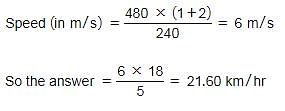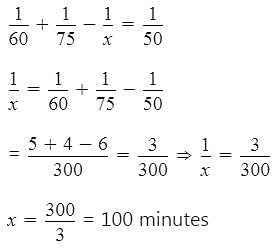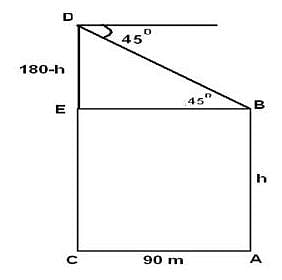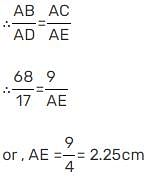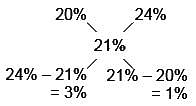Indian Coast Guard Navik GD Mock Test - 4 - Indian Coast Guard Navik GD/DB MCQ
30 Questions MCQ Test Indian Coast Guard Navik GD Mock Test Series 2024 - Indian Coast Guard Navik GD Mock Test - 4
Find the value of log49 16807 - log9 27 ?
The first four terms of an AP whose a is 10 and d is 10 will be?
The smallest number by which 136 must be multiplied so that it becomes a perfect square is
In how many ways can the letters of the word WRISTWATCH be arranged?
An industrial loom weaves 0.128 meters of cloth every second. Approximately, how many seconds will it take for the loom to weave 25 meter of cloth?
A 480 meters long train crosses a tunnel twice its length in 4 minutes. What is the speed (in km/hr) of the train?
Two pipes A and B can separately fill a cistern in 60 minutes and 75 minutes respectively. There is a third pipe in the bottom of the cistern to empty it. If all the three pipes are simultaneously opened, then the cistern is full in 50 minutes. In how much time the third pipe alone can empty the cistern?
A runs  times as fast as B. If A gives B a start of 80 m, how far must the winning post be so that A and B might reach it at the same time?
times as fast as B. If A gives B a start of 80 m, how far must the winning post be so that A and B might reach it at the same time?
A, B and C invest ₹14000, ₹18000 and ₹24000 respectively to start a business. If the profit at the end of the year is ₹25480, then what is total share of A and B?
Vishal bought 60 pens for Rs. 5 each. If he earns an overall profit of Rs. 90, what is the selling price of each pen?
Directions: Find the wrong term in the given series.
13 82 144 199 243 288
The horizontal distance between two towers is 90 m. The angular depression of the top of the first as seen from the top of the second which is 180 m high is 450. Then the height of the first is
Two letters are chosen from the word TEACHING. What is the probability that both the letters are consonants?
If a quarter Kg of potato costs 60 paise, How many paise will 200 gm cost?
In the given figure, DE || BC if AD = 1.7 cm, AB = 6.8 cm and AC = 9 cm, find AE.
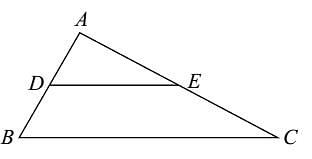
Find the value of k for which the lines 5x + 3y + 2 = 0 and 3x − ky + 6 = 0 are perpendicular.
What is the area of the largest square that can be made in a rectangle with 10 meters length and 4 meters width?
A man buys 2 different articles for Rs. 48,800. He sells one at 24% profit and the other at 20% profit. If he earns an overall profit of 21%, at what price did he sell the one that he sold at 24% profit?
Who discovered the law of conservation of energy?
What is the conversion factor to convert Celsius to Fahrenheit?
What is the pH value of a neutral substance?
Which model of an atom is similar to a Christmas pudding?
Which group of elements in the periodic table is known as halogens?
What is the process of gaining electrons known as?
Which gas law is used to determine the molar mass of an unknown gas?







